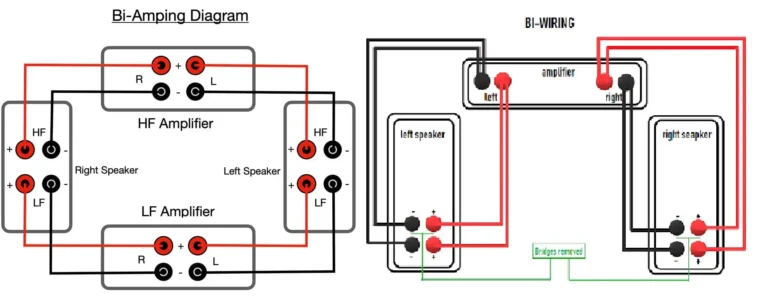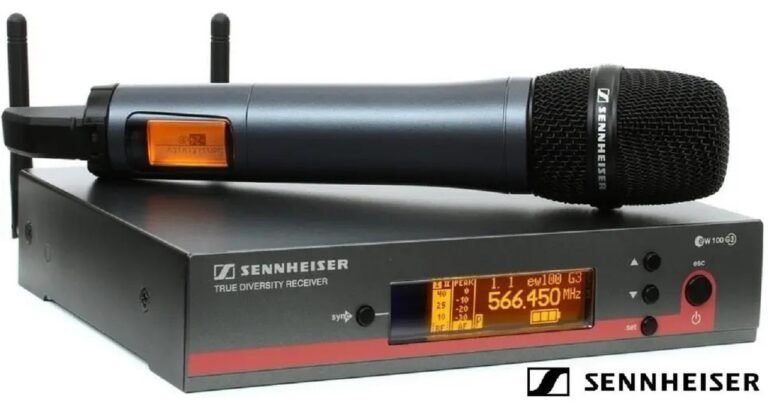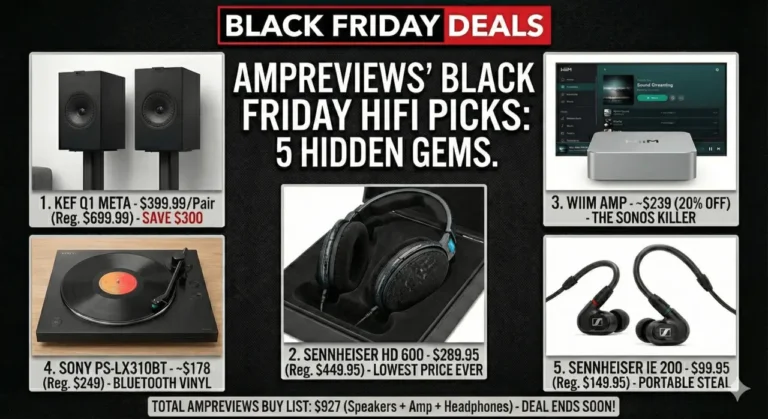9 Best Vintage Speakers That Still Turn Heads
The phrase “newer is better” doesn’t always apply to sound quality. Paul Rigby, the author of The Vinyl Factory, decided to put together a list of speakers with the most immortal design and sound.
Modern manufacturers have gradually begun to show boldness in design, but still, over the last couple of years, the market has been flooded with faceless and banal speakers, driven by the profitable lifestyle segment and brands’ ideas about acoustics appropriate for family living rooms. This has led to the dominance of tall, narrow speakers with weak drivers, without any character.
The design of vintage equipment contrasts with modern technology – it is bright, bold, and pretentious. In those years, attention was paid to sound and innovation, not appearance, and lovers of sound discoveries can usefully spend time digging into old acoustics.
Check Out: Top 10 Songs to Test Your Speakers
It is worth remembering that speakers, like any other audio equipment, are not kind to time. If the case is more or less preserved, then the drivers should be monitored: over time, they become harder, wrinkle, rubber suspensions crumble, and holes may form in the membranes. And it would be a good idea to pay attention to the wiring: check whether everything is soldered and connected as it should be.
In the list, instead of ranking the speakers from cheaper to more expensive, Paul has arranged the devices by age, from old to new. Prices, of course, can vary depending on condition and other factors. And don’t forget that Paul is writing about the UK, where the technology market is different from Russia.
There are no links either, because searching for these speakers is practically a separate detective investigation. You can use eBay, audio enthusiast groups on Facebook, small shops with audio equipment, as well as ads in magazines or blogs to search.
If you know another option for good and stylish vintage speakers that are suitable for a vinyl setup, suggest it in the comments.
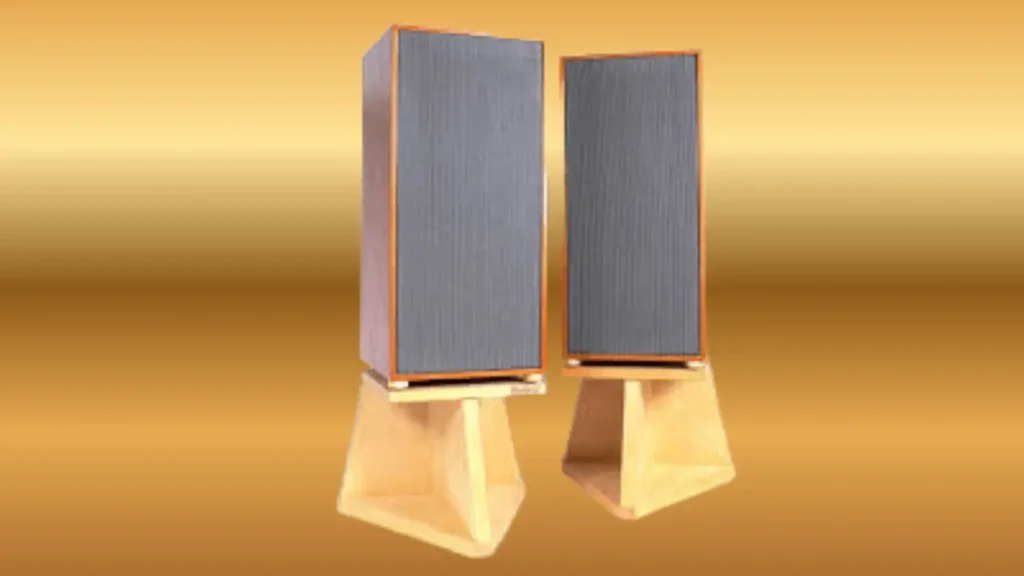
The Spendor BC-1: A British Hi-Fi Legend
Price: £400
Meet the Spendor BC-1, a true icon of British speaker design. Born in the late 1960s from the minds of Spencer and Dorothy Hughes (yep, “Spendor” comes from their names!), this speaker was built with BBC-level precision but made for real-world listening. And boy, did it deliver, especially in the midrange, where voices and instruments sound crazy lifelike.
What’s under the hood?
- A 12-inch Bextrene woofer (a fancy plastic that made bass sound smooth)
- A crisp Celestion tweeter
- Later models added a Coles supertweeter for extra airy highs
The cabinet? Thin and lightweight, with walls that flex on purpose. Sounds weird, but it gives the BC-1 its open, natural sound, like music floating in the room instead of blasting from a box.
Why do people love it?
- Silky-smooth sound, no harshness, just easy listening
- Vocals and acoustic instruments sound real (perfect for jazz, classical, or late-night chilling)
- Not for bass heads or raves, it’s about detail and emotion, not shaking walls
Started as a BBC studio monitor, ended up in homes everywhere. Today, it’s a cult favorite, proof that great sound never goes out of style. If you dig warm, honest, musical sound, the BC-1 is a slice of British hi-fi history worth hearing.
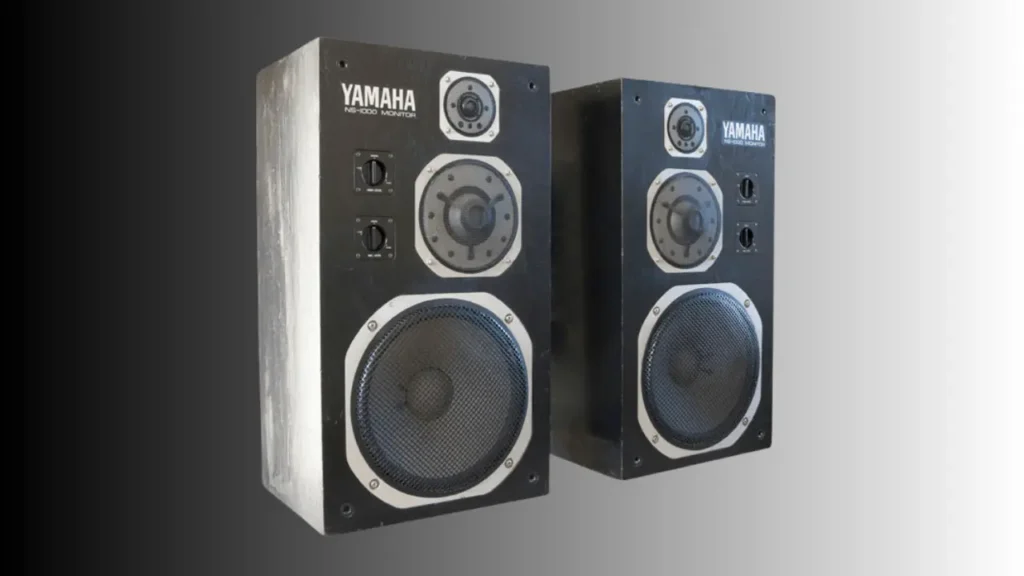
Yamaha NS-1000: Powered Studio Masterpiece
Price: £900
The Yamaha NS-1000 is one of the most iconic and influential speakers ever made. Released in 1974, it was the first speaker you could buy that used beryllium for the midrange and tweeter parts. Beryllium is super light and stiff, which made the NS-1000 crazy fast, detailed, and clear, way ahead of other speakers at the time.
Built as a top-tier studio monitor, it wasn’t just for audiophiles; pros loved it too, and it was even used in radio and TV studios in Japan and Europe. The speaker features a 12-inch paper woofer, a 3.5-inch beryllium midrange dome, and a 1.2-inch beryllium tweeter, all housed in a solid, well-crafted wooden cabinet that remains classy today.
What makes the NS-1000 special is how natural and clear it sounds, no extra coloring, just pure, accurate audio that picks up every tiny detail. Even after all these years, it can still hang with modern high-end speakers, and collectors and music lovers still swear by it.
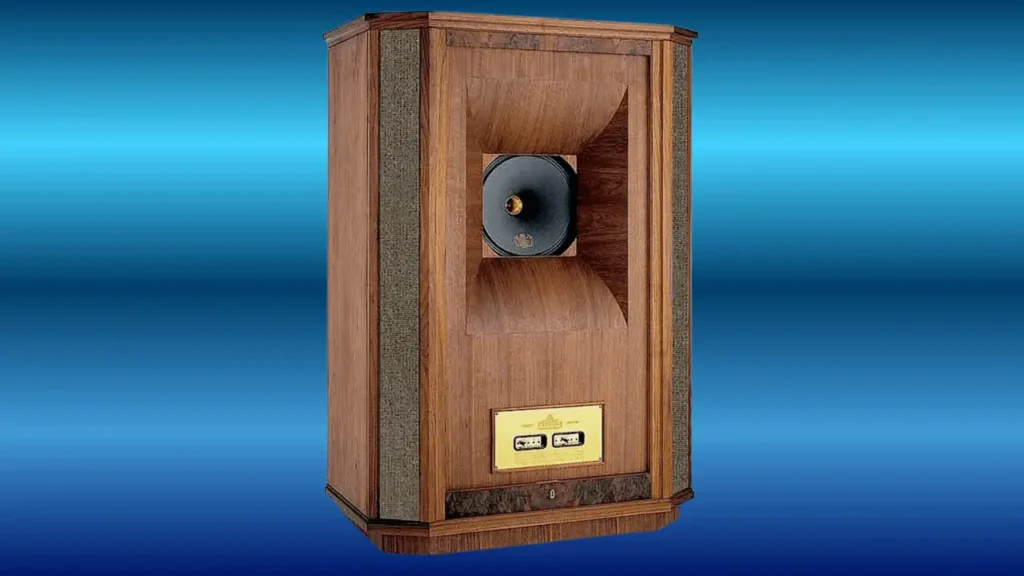
Tannoy Westminster: The Towering Titan of Dual-Concentric Sound
Price: £18,000
Next in our list is the Tannoy Acoustics, with a large folded horn that requires a lot of space; it should be selected for large rooms. The Tannoy Westminster isn’t just another speaker – it’s a living legend. Big, beautiful, and built like a piece of fine furniture, this British masterpiece proves old-school engineering still rocks. That gorgeous wooden cabinet isn’t just for show – it houses one of the coolest speaker designs ever made.
At its heart is Tannoy’s famous 15-inch “two-in-one” driver, where the tweeter sits right inside the woofer. This genius design makes music sound incredibly real and natural, like the band is right in your room. For over half a century, this magic combo has been delivering warm, powerful sound that makes music lovers weak in the knees.
Don’t let the vintage looks fool you – these giants can party. They work amazingly well with small tube amps, serving up buttery-smooth highs, rich midrange, and deep, punchy bass. Whether you’re into jazz or rock, the Westminster makes every note sound alive.
Even today, these speakers stand tall against the flashiest modern designs. For audiophiles who know their stuff, owning a pair of Westminsters isn’t just about great sound – it’s about owning a piece of music history. Classic style, timeless performance, and that special Tannoy magic that just can’t be copied can create an almost holographic music scene.

The Magnepan SMG: The Budget Speaker That Broke All the Rules
When Magnepan dropped the SMG in the 1980s, it was like someone finally made high-end sound affordable. These weird, flat-panel speakers didn’t look or work like normal boxes, and that’s exactly why they rocked.
How’s it different?
- No cones, no boxes, just a giant, super-thin Mylar sheet with wires running through it, floating in a magnetic field. (Yeah, it’s sci-fi speaker tech.)
- Because the whole panel vibrates, you get crazy clarity, zero boxy colorations, and a soundstage wider than your couch.
- Downside? Don’t expect earth-shaking bass or party-volume levels; this is for listening, not rattling windows.
Why do audiophiles still geek out over it?
- Midrange is so natural that it makes vocals and acoustic guitars give you chills
- Disappears in the room, music just hangs in the air like magic
- Proved you didn’t need $10,000 to get holographic, high-end sound
The catch? You’ll need a decent amp and patience to position them right. But if you want to hear what “open” sound means, the SMG is a steal even today.
You May Like: Audiophile Speakers: Things you need to know
Best for: Jazz, classical, and anyone who believes speakers should take a backseat and let the music shine. A cult classic that’s still unbeatable for the price.
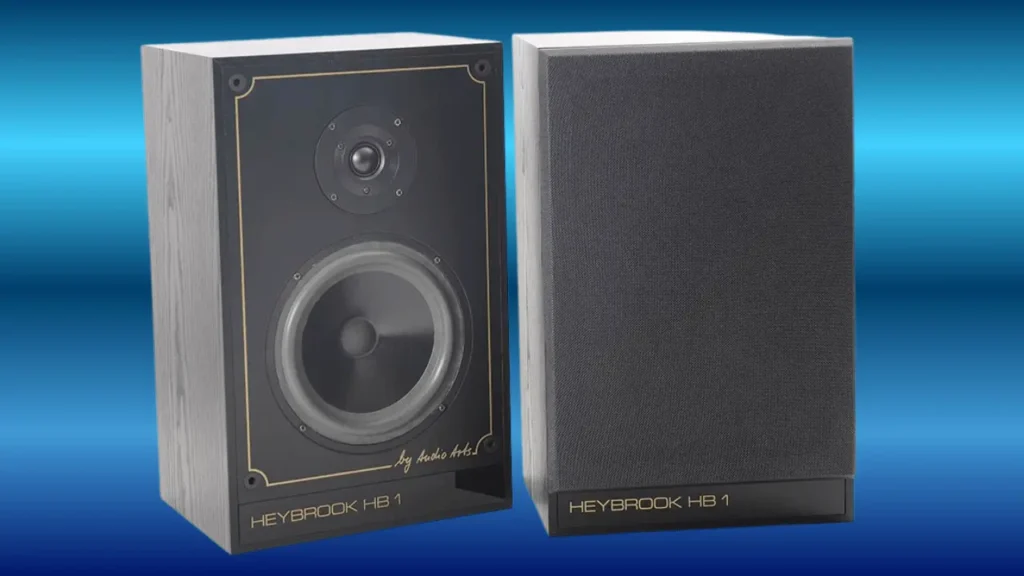
Heybrook HB1: The Affordable Overachiever Vintage Charm
Price: 60 pounds
Next on our list is the Heybrook HB1. It is a classic British bookshelf speaker from the early ’80s that won over music lovers with its great sound and affordable price. Designed by Ivor Humphreys, it was a go-to choice for audiophiles on a budget who still wanted top-notch performance.
Heybrook HB1 is a two-way speaker featuring an 8-inch polypropylene woofer and a 1-inch soft-dome tweeter, housed in a rear-ported cabinet. It might look simple, but the sound is warm, lively, and full of character, with a rich midrange that makes vocals and acoustic instruments sound awesome.
The HB1 has that classic British hi-fi sound, smooth, natural, and great at placing instruments in space. It pairs perfectly with vintage British amps like Naim, Creek, and Audiolab, making it a favorite for retro setups.
Even though it’s been out of production for years, the Heybrook HB1 still has a loyal fan base. If you can find a well-kept pair, they’re a fantastic bargain for anyone who loves warm, musical, and nostalgic sound. A true hidden gem of vintage audio!
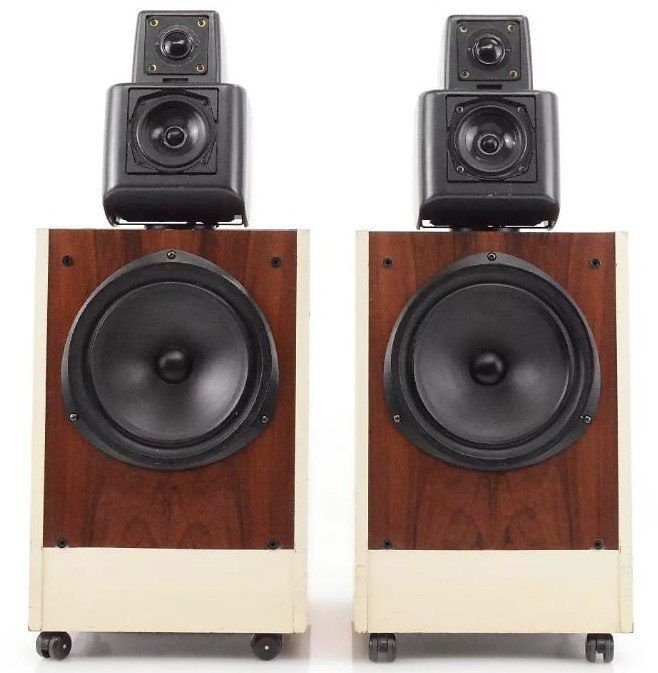
KEF R105: British Bookshelf with Uni-Q Magic
Price: £400
Next on our list is the KEF R105, which was released in the late 1970s. The KEF R105 is a landmark loudspeaker in the history of British hi-fi, representing a time when KEF was at the forefront of acoustic engineering and innovation. Designed as a reference-grade monitor for both studio and domestic use, the R105 combined advanced materials with clever design to achieve a level of performance rarely seen at the time.
The R105 is a three-way system featuring KEF’s famed Bextrene-coned bass driver, a midrange/tweeter head unit mounted separately on top of the main cabinet, and KEF’s T52 tweeter. The separate enclosure of the speaker for the mid and high frequencies was not just for stylle, it was a carefully engineered solution to reduce cabinet coloration and improve imaging. The result was a wide and coherent soundstage, great clarity, and tonal accuracy that earned it accolades from audiophiles and professionals alike.
One of the major qualities of the KEF R105 is its clarity of sound, making it a trustworthy tool for critical listening. KEF R105 can handle dynamics and low-end extension with authority because of its large sealed cabinet design.
Even decades after its release, the KEF R105 remains a highly respected and collectible speaker, a testament to KEF’s commitment to pushing audio boundaries.
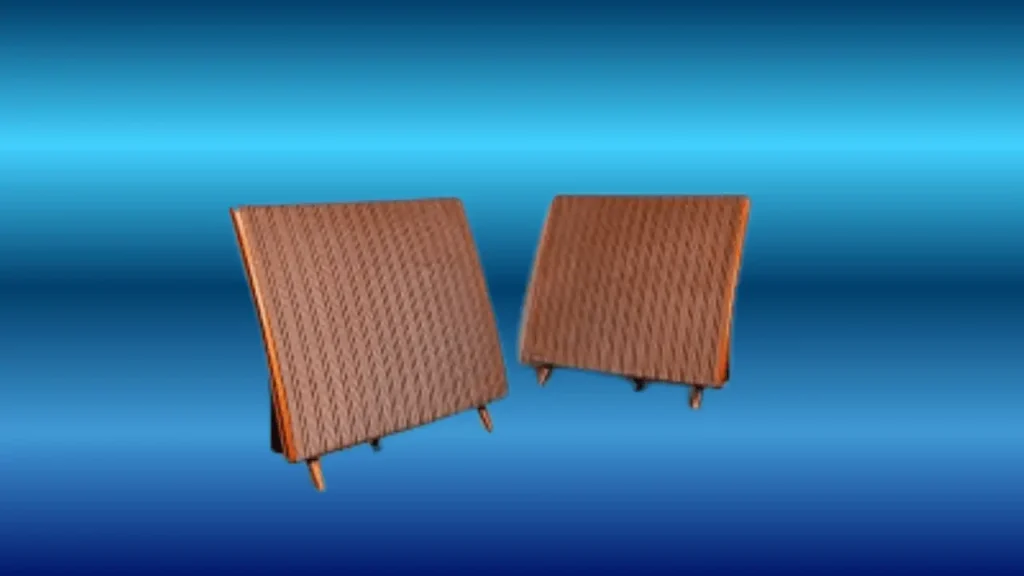
Quad ESL-57: The Electrostatic Legend
Price: £2,500
Next on my list is the Quad ESL-57. And it isn’t just an old speaker, trust me, it’s a legend. Released way back in 1957 by British audio genius Peter Walker, it was the first full-range electrostatic speaker made for home use. And man, did it change the game.
Instead of using normal speaker cones, the ESL-57 works with ultra-thin charged panels that vibrate to make sound. sound is incredibly clear, detailed, and realistic, especially. Voices and instruments sound so real, it’s almost spooky. Even today, many audiophiles swear nothing beats its midrange magic.
The sound is smooth, fast, and incredibly natural, with a huge, 3D soundstage, if you sit in just the right spot. But yeah, it’s not perfect: bass is light, it can’t play super loud, and you’ve gotta sit exactly in the sweet spot. But when everything lines up? Pure audio bliss.
Decades later, the ESL-57 is still a holy grail for vintage audio lovers. People restore them, collect them, and keep them singing. If you want pure, uncolored sound, this is one of the greatest speakers ever made. No hype, just fact.
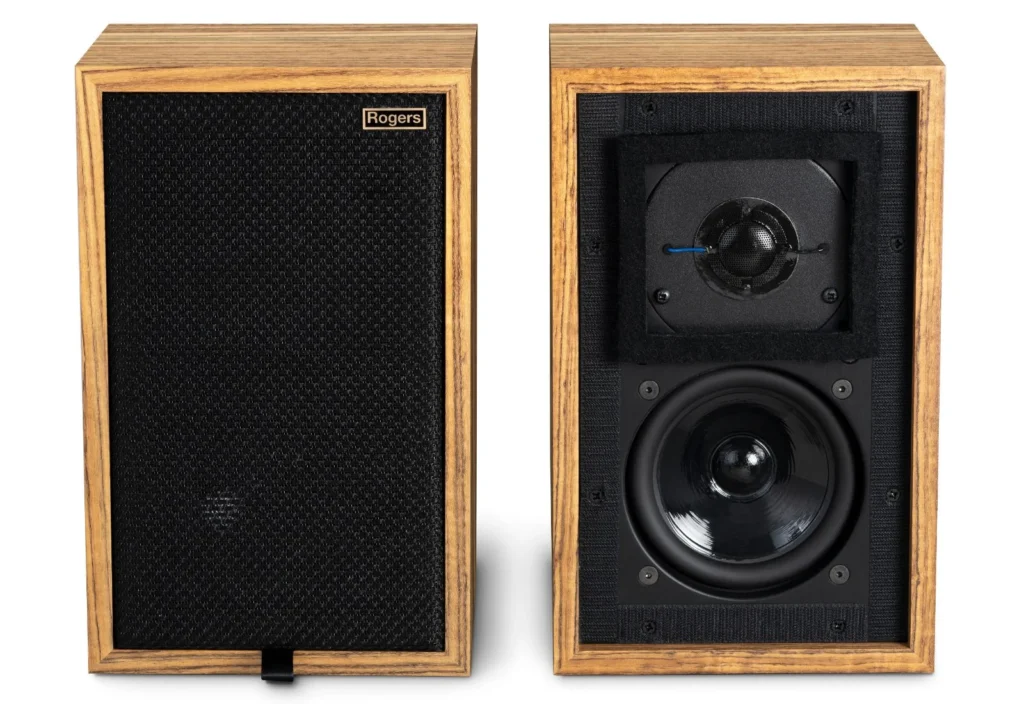
The BBC LS3/5A: The Little Speaker That Could
Price: £2,200
This tiny legend started life in the 1970s as a no-nonsense monitor for BBC broadcast vans, but ended up becoming one of the most beloved small speakers ever made. Seriously, audiophiles obsess over this thing.
What’s the big deal?
- 5-inch Bextrene woofer + 1-inch tweeter crammed into a shoebox-sized cabinet (sealed tight for clean sound)
- No earth-shaking bass, but oh man, the midrange is magic. Voices? Instruments? Like they’re right there in the room with you.
- Perfect for jazz, classical, or anything where emotion matters more than boom
Why do people lose their minds over it?
- Sounds natural and smooth, no harshness, no gimmicks
- Throws a holographic soundstage (fancy talk for “makes tiny bands sound life-sized”)
- Original 15-ohm versions are collector gold, but later Rogers/Spendor/Harbeth models rock too
The kicker? It’s basically a glorified radio monitor that accidentally became the reference for how small speakers should sound. Even today, nothing quite matches its quirky, charming vibe.
Bottom line: Want a big, loud party speaker? Look elsewhere. Want to fall in love with music again? This little BBC box might just do it.
(Still the king of “less is more” after 50 years!)
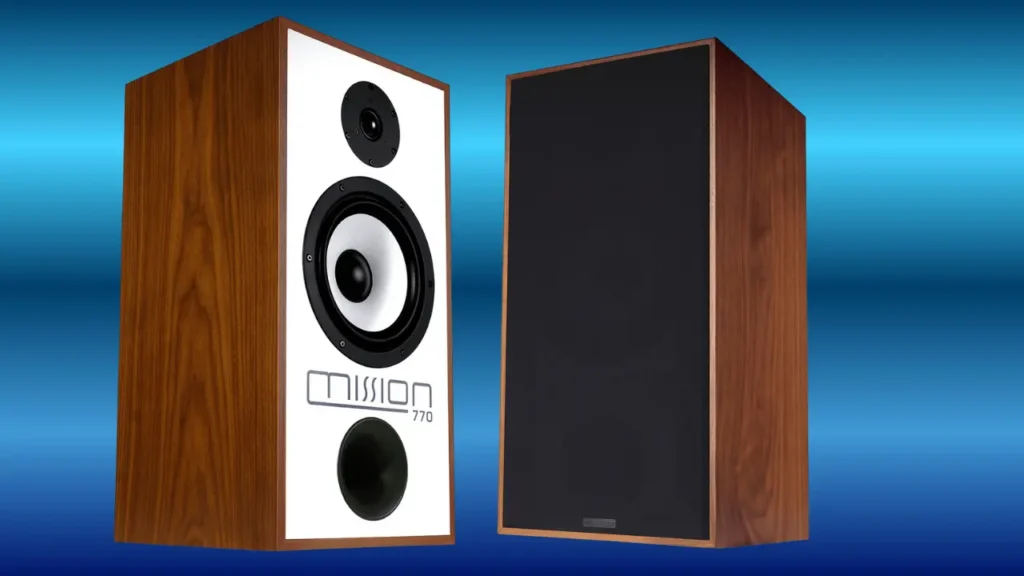
The Mission 770: A British Speaker Legend (That’s Still Awesome Today)
Price: 100 pounds
Back in 1978, Mission Electronics dropped this game-changing speaker that somehow nailed great sound without breaking the bank. Fast forward 40+ years, and people still get nostalgic over it, so much that Mission brought it back in 2022!
What made it special?
- One of the first speakers with a polypropylene woofer (that plastic-y cone made bass tight and quick)
- Big cabinet + 1-inch tweeter = smooth, detailed sound that just flows
- Not too bright, not too boomy, just musical and fun with killer timing (perfect for rock, jazz, you name it)
Why did everyone love it?
- Sounded bigger and pricier than it was
- Warm enough for vinyl, clear enough for audiophiles
- You could listen for hours without ear fatigue (the ultimate compliment!)
The 2022 reissue keeps the magic but upgrades the tech, proving good design never gets old. Want a vintage British vibe with modern chops? The 770’s still got it.
Best for: Music lovers who want foot-tapping sound without the audiophile snobbery. Classic cool!


